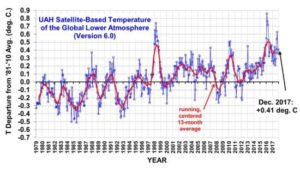by Rysgaard et al., January 22, 2018 in NatureSci.Reports
The Greenland ice sheet (GIS) is losing mass at an increasing rate due to surface melt and flow acceleration in outlet glaciers. Currently, there is a large disagreement between observed and simulated ice flow, which may arise from inaccurate parameterization of basal motion, subglacial hydrology or geothermal heat sources. Recently it was suggested that there may be a hidden heat source beneath GIS caused by a higher than expected geothermal heat flux (GHF) from the Earth’s interior.

